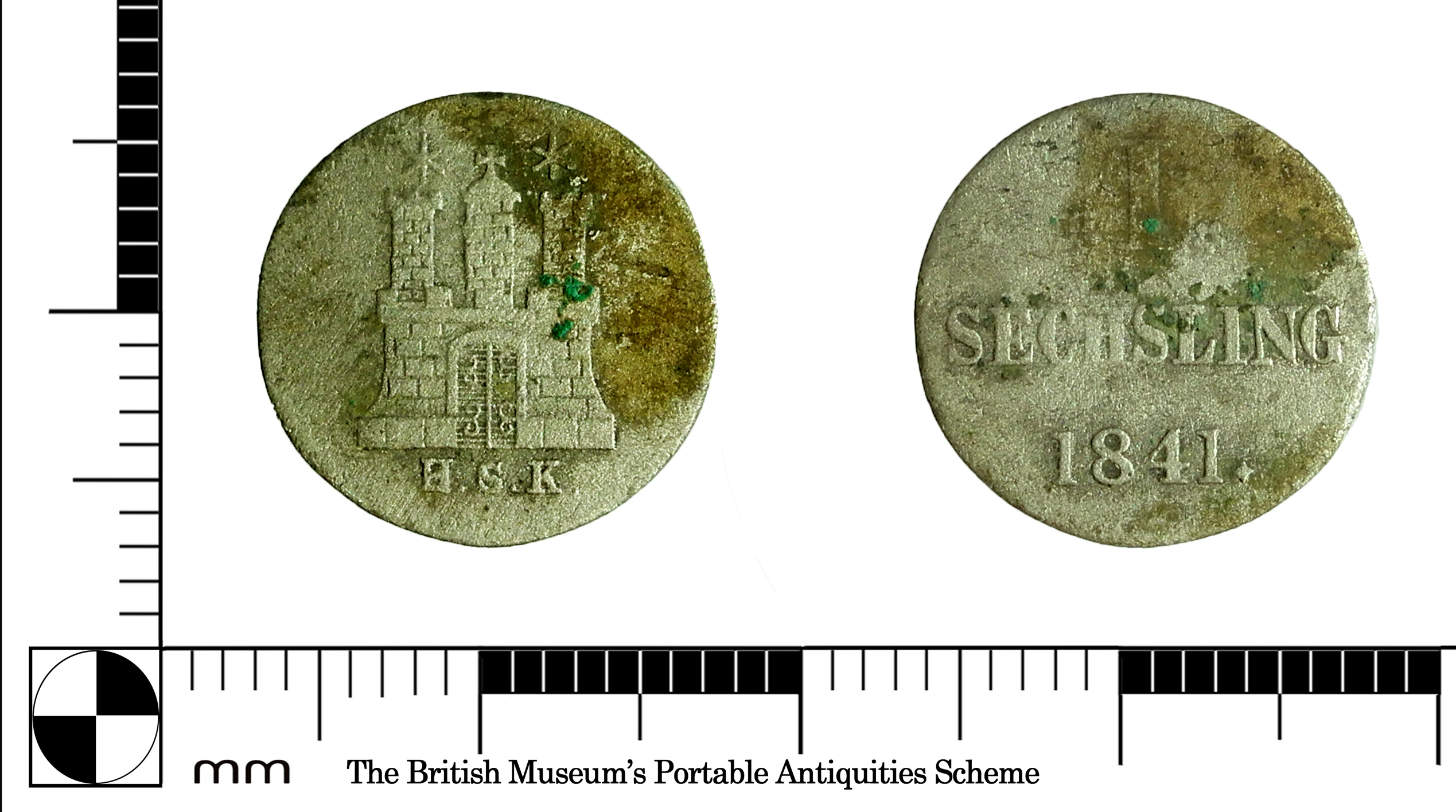Sechsling on:
[Wikipedia]
[Google]
[Amazon]

 The Sechsling, also ''Sößling'', ''Søsling'' (Dan./Norw.) or ''Sechser'', was the name of a type of coin with a value of six ''
The Sechsling, also ''Sößling'', ''Søsling'' (Dan./Norw.) or ''Sechser'', was the name of a type of coin with a value of six ''

 The Sechsling, also ''Sößling'', ''Søsling'' (Dan./Norw.) or ''Sechser'', was the name of a type of coin with a value of six ''
The Sechsling, also ''Sößling'', ''Søsling'' (Dan./Norw.) or ''Sechser'', was the name of a type of coin with a value of six ''Pfennig
The 'pfennig' (; . 'pfennigs' or ; symbol pf or ₰) or penny is a former German coin or note, which was the official currency from the 9th century until the introduction of the euro in 2002. While a valuable coin during the Middle Ages, ...
s'', representing half a ''Groschen
Groschen (; from la, grossus "thick", via Old Czech ') a (sometimes colloquial) name for various coins, especially a silver coin used in various states of the Holy Roman Empire and other parts of Europe. The word is borrowed from the late Lat ...
'' or half ''Schilling Schilling may refer to:
* Schilling (unit), an historical unit of measurement
* Schilling (coin), the historical European coin
* Austrian schilling, the former currency of Austria
* A. Schilling & Company, an historical West Coast spice firm acquir ...
'' depending on the monetary system.
The ''Sechsling'' was first minted in 1388 by the city of Lübeck
Lübeck (; Low German also ), officially the Hanseatic City of Lübeck (german: Hansestadt Lübeck), is a city in Northern Germany. With around 217,000 inhabitants, Lübeck is the second-largest city on the German Baltic coast and in the stat ...
. With the treaty (''Rezess'') of 1392, the ''Sechsling'' became part of the monetary system within in the Wendish Coinage Union
The Wendish Coinage Union (''Wendischer Münzverein'') was an organisation bound by treaty formed by the North German Hanseatic towns from 1379 to the 16th century whose aim was to have standardised coinage regulations.
The core cities involved ...
and was thus a so-called 'Union coin' (''Vereinsmünze The Vereinsthaler (, ''union thaler'') was a standard silver coin used in most German states and the Austrian Empire in the years before German unification.
The Vereinsthaler was introduced in 1857 to replace the various versions of the North Ge ...
''). In addition to Lübeck, it was therefore issued by Hamburg
Hamburg (, ; nds, label=Hamburg German, Low Saxon, Hamborg ), officially the Free and Hanseatic City of Hamburg (german: Freie und Hansestadt Hamburg; nds, label=Low Saxon, Friee un Hansestadt Hamborg),. is the List of cities in Germany by popul ...
, Lüneburg
Lüneburg (officially the ''Hanseatic City of Lüneburg'', German: ''Hansestadt Lüneburg'', , Low German ''Lümborg'', Latin ''Luneburgum'' or ''Lunaburgum'', Old High German ''Luneburc'', Old Saxon ''Hliuni'', Polabian ''Glain''), also calle ...
and Wismar
Wismar (; Low German: ''Wismer''), officially the Hanseatic City of Wismar (''Hansestadt Wismar'') is, with around 43,000 inhabitants, the sixth-largest city of the northeastern German state of Mecklenburg-Vorpommern, and the fourth-largest city ...
. Other cities followed.
The ''Sechsling'' was minted until the dissolution of the Wendish Coinage Union after the middle of the 16th century. In the following imperial minting ordinance
Imperial is that which relates to an empire, emperor, or imperialism.
Imperial or The Imperial may also refer to:
Places
United States
* Imperial, California
* Imperial, Missouri
* Imperial, Nebraska
* Imperial, Pennsylvania
* Imperial, Texas ...
(''Reichsmünzordnung''), which was based on the ''Thaler
A thaler (; also taler, from german: Taler) is one of the large silver coins minted in the states and territories of the Holy Roman Empire and the Habsburg monarchy during the Early Modern period. A ''thaler'' size silver coin has a diameter ...
'', it was worth ''Thaler''. Hamburg minted the last ''Sechslings'' in 1855 from a billon alloy
Billon () is an alloy of a precious metal (most commonly silver, but also gold) with a majority base metal content (such as copper). It is used chiefly for making coins, medals, and token coin
In numismatics, token coins or trade tokens ar ...
.
Deriving from the Prussian silver groschen
The ''Silbergroschen'' was a coin used in Prussia and several other German Confederation states in northern Germany during the 19th century, worth one thirtieth of a Thaler.Friedrich von Schrötter: ''Wörterbuch der Münzkunde.'' 2nd edn. 1970, p ...
( ''Thaler''), after the introduction of the imperial Mark in 1871, the equivalent 10 ''Pfennig'' coin was popularly referred to in Germany as a ''Groschen''. In the Berlin dialect, the term ''Sechser'' for half a ''Groschen'' was simply transferred to the 5 ''Pfennig'' coin; this designation is still occasionally heard in relation to the 5 euro cent coin. Colloquially, some bridges in Berlin are still called ''Sechser'' bridges (''Sechserbrücke'') because the toll for pedestrians was once 6 ''Pfennigs'' or ''groschen''.
See also
* '' Roter Seufzer'', a 6 ''pfennig'' piece from theLeipzig Mint
Leipzig ( , ; Upper Saxon: ) is the most populous city in the German state of Saxony. Leipzig's population of 605,407 inhabitants (1.1 million in the larger urban zone) as of 2021 places the city as Germany's eighth most populous, as w ...
References
* Wilhelm Jesse: ''Der Wendische Münzverein''. 2nd edition. Brunswick: Klinkhardt & Bärmann, 1967 (reprint of the 1928 Lübeck ed.). {{Groschen Coins of the Holy Roman Empire Pfennig